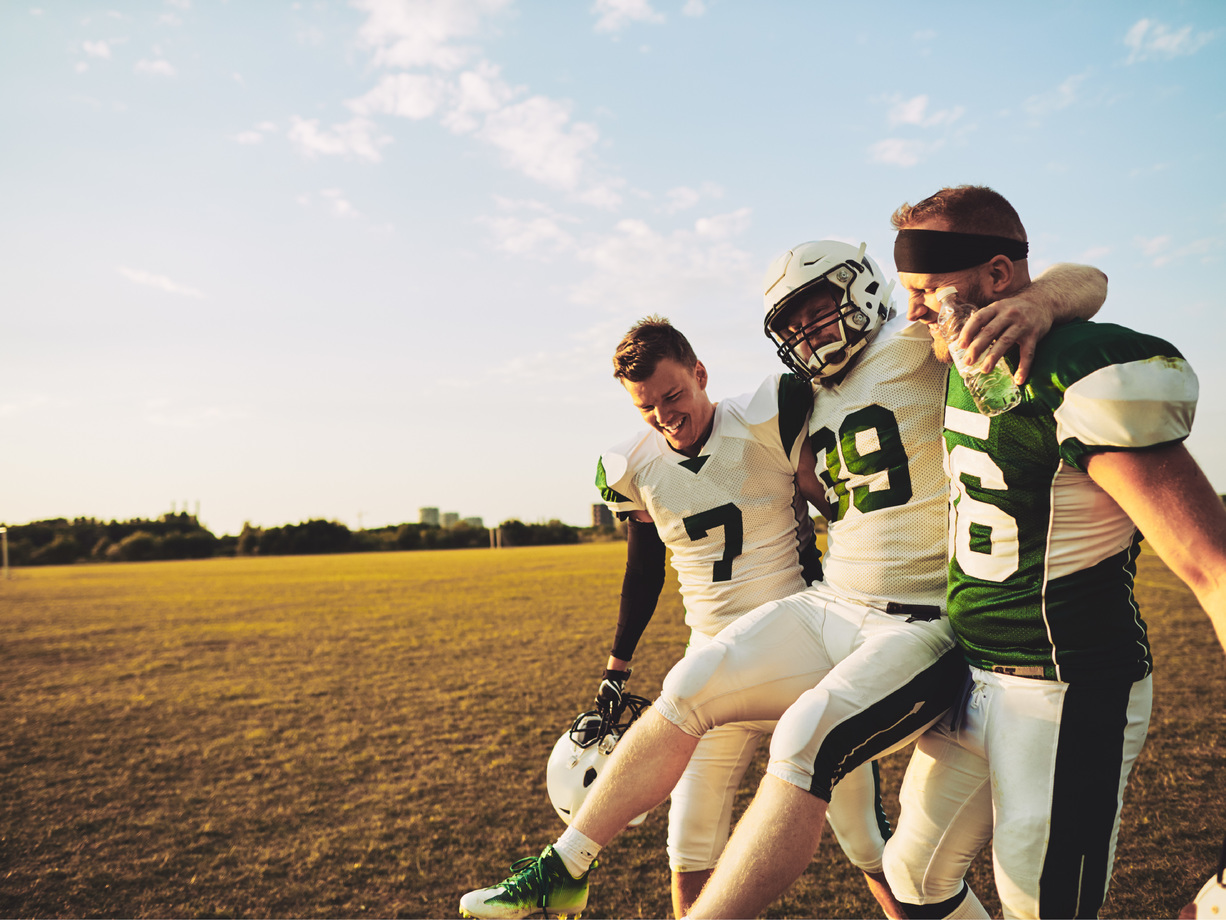Half Of Injured Football Players "Take A Knee"
Knees Account for 50% of All Football Injuries
Fall weather brings bonfires, hoodies, pumpkin spice lattes, and most importantly FOOTBALL! And what does football bring … unfortunately, lots of orthopedic injuries!
Football has the highest risk of injury when compared to all other sports. Full contact combined with high speed often causes injuries to multiple areas of the body with the most common being the knee. In fact, knee injuries account for 50.4% of NFL injuries.
There are four ligaments in the knee: the anterior cruciate ligament (ACL), the posterior cruciate ligament (PCL), the lateral collateral ligament (LCL), and the medial collateral ligament (MCL). All of these ligaments work to connect the bones of the upper leg to the bones of the lower leg and all are susceptible to injury in football players. When one or more of these ligaments tear, players usually notice a distinct popping sound accompanied by severe pain, swelling, and weakness.
Injuries to the ACL or PCL can become damaged or torn when a player is impacted from the front or rear or a sudden change in direction. ACL and PCL injuries almost always require surgery to reconstruct the torn ligament because these ligaments are not good at healing themselves.
MCL injuries in the knee are also very common because it occurs when the knee is impacted from the side which causes the ligament to stretch or tear. Rest, ice, and anti-inflammatory medications are generally sufficient for treating MCL tears because this ligament is fairly good at self-healing. Surgery isn’t usually required unless the tear is severe and other parts of the knee such as the ACL or meniscus are involved. LCL injuries are fairly rare, as they tend to result from blows to the inside of the knee joint.
Each knee has two menisci which are small, C-shaped pieces of cartilage that serve as a cushion between the bones of the shin and thigh. Meniscal injuries often occur when a player rotates their body while a foot stays planted, the knee can twist, causing the meniscus to tear. Pain, swelling, and stiffness are all symptoms of a torn meniscus. Additionally, players might feel like the injured knee is locked in place. Minor injuries can be treated with rest, ice, and anti-inflammatory medications, but severe tears require surgery and physical therapy.
Knee injuries – especially injuries to the ACL – can take up to nine months to recover from because they need time to heal and need time to restore mobility and function, rebuild muscle tissue and restore coordination. Many times these injuries can be prevented by proper warm up before and cool down after practices and games as well as stretches and exercises that increase strength, stability, and mobility in the knee.
Share
